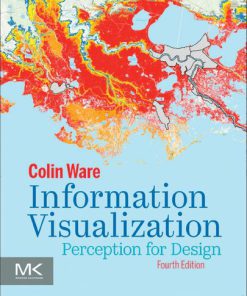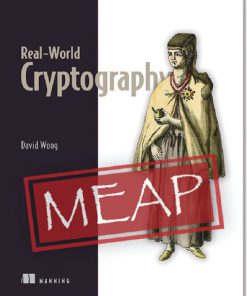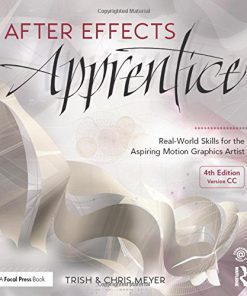Real World Research 4th Edition by Colin Robson, Kieran McCartan 9781119144854 111914485X
$50.00 Original price was: $50.00.$25.00Current price is: $25.00.
Real World Research 4th Edition by Colin Robson, Kieran McCartan – Ebook PDF Instant Download/Delivery: 9781119144854, 111914485X
Full download Real World Research 4th Edition after payment

Product details:
• ISBN 10:111914485X
• ISBN 13:9781119144854
• Author: Colin Robson, Kieran McCartan
Real World Research
Real world research is a common responsibility of professionals and practitioners in a wide range of both public and private settings. These include teachers, social workers and health service professionals, managers and specialists in business, architects, designers, criminologists and accountants among many others.
Real World Research provides a clear route-map of the various steps needed to carry out a piece of applied research to a high professional standard. It is accessible to those without a social science background while providing rigorous and fully up-to-date coverage of contemporary issues and debates. It brings together materials and approaches from different social science disciplines, seeing value in both quantitative and qualitative approaches, as well as their combination in mixed-method designs.
Colin Robson’s bestselling textbook is essential reading for many higher education courses, at both undergraduate, taught postgraduate and doctoral level, as well as practitioners and others carrying out research as part of their job. A very extensive website, which is closely keyed in to the text, provides additional resources including copious examples of research and further discussion of research issues, links to other useful resources and selected journal articles, annotated lists of further reading and an extensive set of PowerPoint slides.
Real World Research 4th Table of contents:
PART I SETTING THE SCENE
Chapter 1 Introduction
What is real world research?
Design matters
Evaluation and change
The audience for this book
Returning to the real world
Beginning the journey
Further reading
Chapter 2 Approaches to social research
Introduction
What is science?
Postmodernism and extreme relativist approaches
The two traditions: quantitative and qualitative social research
The quantitative paradigm
The qualitative paradigm
Paradigms and research questions
A pragmatic approach
Multi-strategy research designs
Realism and real world research
The purposes of research
Practical value of the theoretical material covered in the chapter
Further reading
PART II PLANNING: SELECTING A STRATEGY
Chapter 3 Developing your ideas
Introduction
Searching and reviewing the literature
Research questions
The place of theory
Further reading
Chapter 4 General design issues
Introduction
A framework for research design
Getting a feel for design issues
Establishing trustworthiness
Further reading
Chapter 5 Desk-based research
Introduction
Types of desk-based research
Doing a literature review as a desk-based project
Doing a systematic review
Doing realist reviews
In summary
Further reading
Chapter 6 Fixed designs
Introduction
General features of fixed designs
Establishing trustworthiness in fixed design research
True experiments
Designs involving matching
Quasi-experiments
Single-case experiments
Non-experimental fixed designs
Sample size in fixed designs
Further reading
Chapter 7 Flexible designs
Introduction
General features of flexible designs
Research traditions in qualitative research
Case studies
Ethnographic studies
Grounded theory studies
Other traditions
Sampling in flexible designs
Establishing trustworthiness in flexible design research
Further reading
Chapter 8 Multi-strategy (mixed method) designs
Introduction
The quantitative-qualitative incompatibility thesis
The mixed methods movement
Types of multi-strategy designs
Designing and carrying out multi-strategy research
Pragmatism, realism or ‘anything goes’?
Dealing with discrepancies in findings
Further reading
Chapter 9 Designs for particular purposes: evaluation, action and change
Introduction
Evaluation research
Action research
Intervention and change
Researchers and practitioners
Further reading
Chapter 10 Ethical and political considerations
Introduction
Ethical codes and guidelines
Ethical issues
Researcher safety and risk
Working with vulnerable groups
General ethical responsibilities
Ethical review boards and committees
Politics and real world research
Sexism, racism and social research
Further reading
PART III TACTICS: THE METHODS OF DATA COLLECTION
Chapter 11 Surveys and questionnaires
Introduction
Designing surveys
Carrying out a sample survey
Designing and using a questionnaire
Diaries
Sampling in surveys – and elsewhere
Probability samples
Non-probability samples
Further reading
Chapter 12 Interviews and focus groups
Introduction
Types and styles of interviews
General advice for interviewers
Content of the interview
Carrying out different types of interview
Focus groups
Dealing with interview data
Skills in interviewing
Further reading
Chapter 13 Tests and scales
Introduction
Measurement scales
Other scaling techniques
Using existing tests and scales
Developing your own test
Further reading
Chapter 14 Observational methods
Introduction
Observation in real world research
Approaches to observation
Participant observation
Getting started as a participant observer
Structured observation
Deciding on a coding scheme
The use of existing coding schemes
Developing your own scheme
Coding sequences of behaviour
Reliability and structured observation
Further reading
Chapter 15 Additional methods of data collection
Introduction
Unobtrusive measures
Content analysis of documents
Secondary data analysis
Introduction to a range of more specialist techniques
Internet-based research
Feminist research methods
Using multiple methods
Further reading
Chapter 16 Writing a project proposal
Introduction
How to recognize a good proposal
The content of a research proposal
The problem of pre-specifying flexible design studies
Shortcomings of unsuccessful proposals
Sources of funding
Further reading
PART IV CARRYING OUT THE PROJECT
PART V DEALING WITH THE DATA
Analysing and interpreting data
Realist analysis and interpretation
Analysis or interpretation?
Quantitative and qualitative data – and their integration in multi-strategy designs
Chapter 17 The analysis and interpretation of quantitative data
Introduction
Creating a data set
Starting data analysis
Exploring the data set
Exploring relationships between two variables
Exploring relationships among three or more variables
Analysing differences
Quantitative analysis and different fixed design research strategies
Further reading
Chapter 18 The analysis and interpretation of qualitative data
Introduction
Types of qualitative analysis
Using the computer for qualitative data analysis
Dealing with the quantity of qualitative data
Thematic coding analysis
Data analysis in grounded theory studies
Alternative approaches to qualitative analysis
Integrating qualitative and quantitative data in multi-strategy designs
Further reading
Chapter 19 Reporting, disseminating and moving forward
Introduction
Ethics and reporting
Reporting fixed design research
The scientific journal format
Reporting flexible design studies
Reporting on multi-strategy design studies
Reporting on case studies
Reporting on literature reviews
Writing for non-academic audiences – the technical report
Alternative forms of presentation
Writing skills
Where next?
Further reading
Appendix A: Using specialist software for quantitative analysis
Appendix B: Using specialist software for qualitative analysis
Subject Index
End User License Agreement
People also search for Real World Research 4th:
real world research 4th edition
real world research 4th edition pdf
robson real world research 4th edition pdf
doing research in the real world 4th edition pdf
real world reading pdf
You may also like…
Computers - Computer Science
Computers - Computer Graphics & Design
Computers - Cybernetics
Mathematics - Optimization. Operations Research
Computers - Networking
Biology and other natural sciences - Microbiology
Small World Initiative A Research Guide to Microbial and Chemical Diversity 4th Edition S. Hernandez
Computers - Computer Graphics & Design
Business & Economics - Real Estate
Politics & Philosophy - Social Sciences
Real Research: Research Methods Sociology Students Can Use Liahna 1544357877 9781544357874











